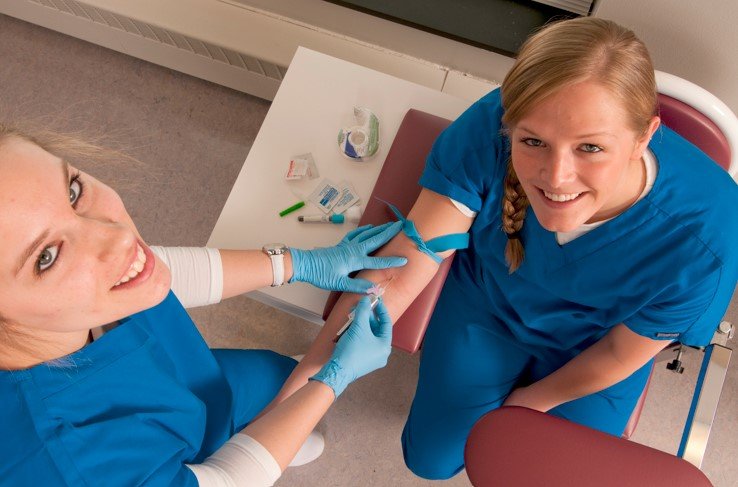Improving Accessibility and User-Friendliness of Medical Equipment for Disabled Patients in US Hospitals
Summary
- Hospitals in the United States need to prioritize accessibility and user-friendliness of medical equipment and supplies for disabled patients.
- Implementing proper training for staff members and regular maintenance of equipment can enhance the overall experience for disabled patients.
- Adhering to ADA guidelines, seeking feedback from disabled patients, and investing in innovative technology are crucial steps for hospitals to improve accessibility and usability for disabled individuals.
Introduction
Accessibility and user-friendliness of medical equipment and supplies are essential factors for hospitals in the United States to consider when providing care for disabled patients. Ensuring that individuals with disabilities have equal access to healthcare services is not only a legal requirement under the Americans with Disabilities Act (ADA), but it also reflects the hospital's commitment to inclusivity and patient-centered care.
Challenges Faced by Disabled Patients
Disabled patients often encounter various challenges when accessing medical equipment and supplies in hospitals. Some of the common issues include:
Physical Barriers
- Lack of wheelchair-accessible exam tables and diagnostic equipment
- Inadequate signage and wayfinding for visually impaired individuals
- Unsuitable medical devices for patients with mobility impairments
Communication Barriers
- Difficulty in understanding medical instructions for patients with hearing impairments
- Lack of communication tools for non-verbal patients
- Inaccessible medical records and information for patients with cognitive disabilities
Technological Barriers
- Complexity of medical equipment interfaces for individuals with dexterity issues
- Lack of compatibility with assistive devices for disabled patients
- Limited availability of telehealth options for patients with mobility limitations
Steps for Hospitals to Ensure Accessibility and User-Friendliness
To address the unique needs of disabled patients and improve their overall healthcare experience, hospitals in the United States can take the following steps:
Staff Training
Providing comprehensive training to Healthcare Providers and support staff on how to assist disabled patients effectively is crucial. Training should cover topics such as:
- Proper techniques for transferring and positioning patients with mobility impairments
- Effective communication strategies for patients with hearing or speech impairments
- Understanding the needs of patients with cognitive disabilities and providing appropriate support
Equipment Maintenance
Regular maintenance and calibration of medical equipment are essential to ensure their functionality and reliability for all patients, including those with disabilities. Hospitals should:
- Implement scheduled maintenance checks for all medical devices and supplies
- Ensure that assistive devices such as hearing aids and communication tools are in good working condition
- Prioritize timely repairs and replacements for any faulty equipment
Adherence to ADA Guidelines
Compliance with ADA guidelines is critical for hospitals to create a barrier-free environment for disabled patients. Hospitals should:
- Ensure wheelchair-accessible facilities, including exam rooms, bathrooms, and waiting areas
- Provide accessible communication options such as sign language interpreters and braille signage
- Offer alternative formats for medical documents and information, such as large print or electronic versions
Feedback from Disabled Patients
Seeking feedback from disabled patients about their experiences in accessing medical equipment and supplies can help hospitals identify areas for improvement. Hospitals should:
- Conduct surveys or focus groups to gather feedback from disabled patients and their caregivers
- Actively listen to concerns and suggestions for enhancing accessibility and usability
- Implement changes based on patient feedback to create a more inclusive healthcare environment
- Invest in telemedicine platforms to provide remote consultations for patients with mobility limitations
- Explore the use of assistive devices and communication aids to enhance patient-provider interactions
- Implement electronic health record systems that are compatible with assistive technologies for disabled patients
Investment in Innovative Technology
Utilizing technology to improve accessibility and user-friendliness for disabled patients can significantly enhance their healthcare experience. Hospitals can:
Conclusion
Ensuring that medical equipment and supplies are fully accessible and user-friendly for disabled patients is a critical aspect of providing quality healthcare services in hospitals. By prioritizing staff training, equipment maintenance, ADA compliance, patient feedback, and innovative technology, hospitals in the United States can create a more inclusive and patient-centered healthcare environment for individuals with disabilities.

Disclaimer: The content provided on this blog is for informational purposes only, reflecting the personal opinions and insights of the author(s) on the topics. The information provided should not be used for diagnosing or treating a health problem or disease, and those seeking personal medical advice should consult with a licensed physician. Always seek the advice of your doctor or other qualified health provider regarding a medical condition. Never disregard professional medical advice or delay in seeking it because of something you have read on this website. If you think you may have a medical emergency, call 911 or go to the nearest emergency room immediately. No physician-patient relationship is created by this web site or its use. No contributors to this web site make any representations, express or implied, with respect to the information provided herein or to its use. While we strive to share accurate and up-to-date information, we cannot guarantee the completeness, reliability, or accuracy of the content. The blog may also include links to external websites and resources for the convenience of our readers. Please note that linking to other sites does not imply endorsement of their content, practices, or services by us. Readers should use their discretion and judgment while exploring any external links and resources mentioned on this blog.

